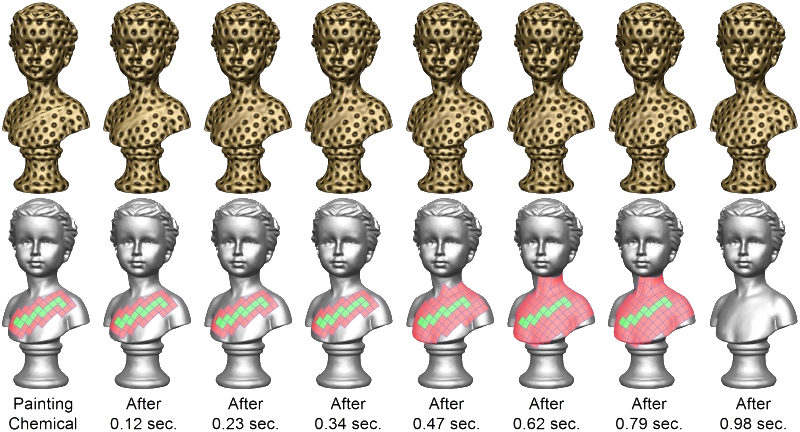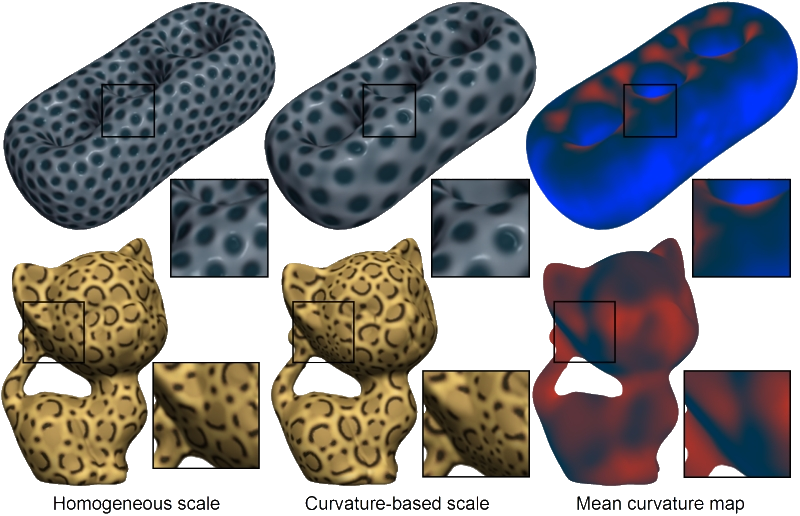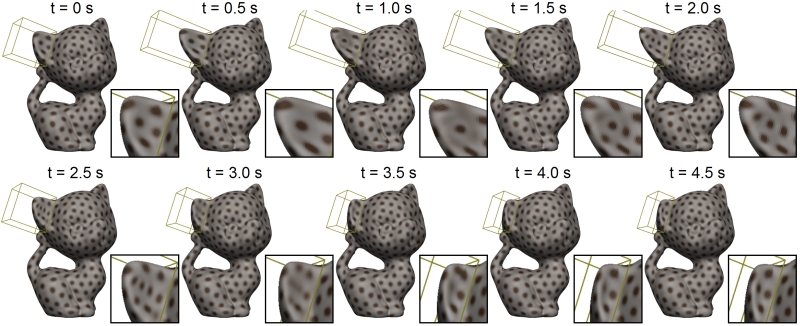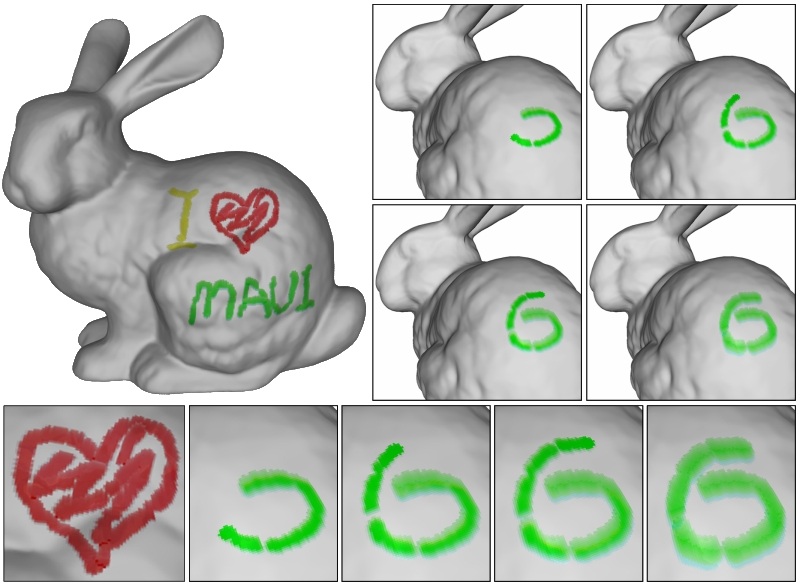
|
Interactive Reaction-Diffusion on Surface TilesKui-Yip Lo,
Hongwei Li,
Chi-Wing Fu,
and Tien-Tsin Wong |
Abstract
This paper proposes to perform reaction-diffusion on surface tiles. The square tiles fit nicely and cost-effectively in GPU memory, whereas we also apply distortion minimization on tiles so as to precisely reduce the unbalanced scale and resolution problem of chemicals in the reaction-diffusion. The interconnection nature of tiles accounts for the surface topology, and thus allows the chemicals to flow naturally over surfaces of arbitrary genus. Furthermore, by taking advantage of the tile structure, we can efficiently perform localized reaction-diffusion, and adjust the pattern formulation in an interactive manner on the GPU. To demonstrate its performance, we develop an interactive system that allows texture designers to fine-tune and alter the reaction-diffusion process by directly painting chemicals onto the object surface. Finally, we also develop several non-trivial applications of reaction-diffusion, including the geometry-dependent reaction-diffusion and deformation-aware reaction-diffusion.Global (above) VS Localized (below) Reaction-Diffusion
Global reaction-diffusion: Computing reaction-diffusion globally over all tiles on the HOLES model (genus-three); It takes around 3-4 seconds to go from an initial homogeneous state to a final equilibrium state.
Localized reaction-diffusion: Distorting the equilibrium pattern on the BUSTE model; Reaction-diffusion patterns can be evolved at interactive speed by using localized reaction-diffusion computation on the active tile set.

Distortion Minimization
By locally adjusting the diffusion rate, we can minimize the distortion caused by the surface parameterization. Results: KITTEN (left) and BUNNY (right):
Application 1: Geometry-Dependent Reaction-Diffusion
The results below demonstrates the effect of using the mean curvature to adjust pattern scales on two different 3D models: HOLES3 model (top) and KITTEN model (bottom).

|
Application 2: Interative Painting
Writing some hidden letters in the strip pattern (left) and locally controlling the pattern scale (right) on LAURANA.

|
Application 3: Interative Deformation
Interactive Deformation of KITTEN's ear: Reaction-Diffusion can be performed lively with the deformation action and equilibrium state can be reached within a few seconds.

|
Application 4: Water Drop
A water drop flowing down on KITTEN. The four snapshots (from left to right) are successively taken at a time internal of one second.

|
Application 5: Water Color Painting
Water color painting on BUNNY. The four successive images on the right hand side are captured 0.5 seconds one after another. Here, the two chemicals in the reaction-diffusion system are used to represent water concentration and pigment concentration; because of their difference in diffusion rate and also of the variable stickiness, we can mimic water flow and pigment flow, and produce the diffusion pattern around the brush stroke. Note that the more water the user specified in the brush before the painting, the more the amount of diffusion could be resulted in the simulation.

|
Download
Click the following link to download (to be released soon):- Manuscript: download (~11.6 MB)
- Animation demo: download (avi format, using DivX codec) (~93.7 MB, 5 min. 15 sec.)
BibTex
@inProceedings{lo-2007-surface-tiles,author = {Kui-Yip Lo and Hongwei Li and Chi-Wing Fu and Tien-Tsin Wong},
title = {Interactive Reaction-Diffusion on Surface Tiles},
booktitle = {Pacific Graphics 2007},
year = {2007},
pages = {65--74},
}